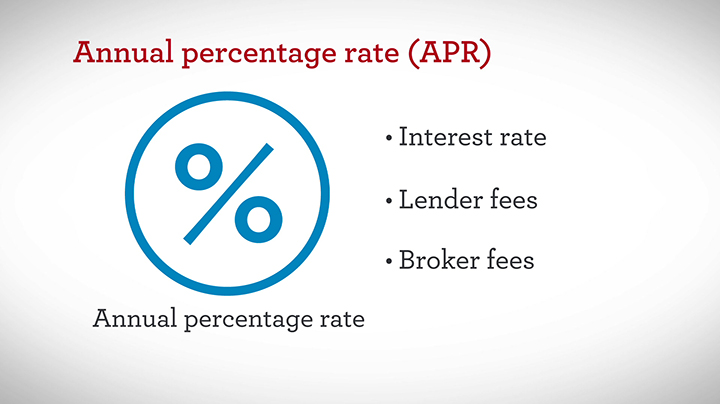Annual Percentage Rate (APR)


What is Annual Percentage Rate?
Many types of credit require an annual percentage rate, or APR. APR stands for annual percentage rate. In other words, it specifies the amount of interest you’ll pay if you borrow for a full year. Assume you borrow $100 at 10% APR. You’ll pay $10 in interest over the course of a year (since $10 is 10% of $100). In actuality, you’ll most likely pay more than $10.
Understanding Annual Percentage Rate
You may not borrow for a complete year, or your borrowing amount may fluctuate over the year (as you make purchases and payments on your credit card, for example). To obtain specific figures, you may need to do some math.
The above example implies interest is calculated and levied only once per year, and you do not pay any fees—which may or may not be correct. Credit cards typically charge tiny amounts of interest daily or monthly (and add those charges to your loan debt), resulting in you paying more due to compounding. (Those interest costs are applied to your debt, allowing you to pay extra interest the next day.)
To get your daily rate, multiply the APR by 365. If the annual percentage rate is 10%, the daily rate is 0.0274% (0.10 divided by 365 =.000274). It should be noted that some credit cards split by 360 days rather than 365 days. 3
Nonetheless, you may generally infer that a lower APR is preferable to a higher APR (with mortgages being an important exception).
Read related articles:
« Back to Glossary IndexDisclaimer
In line with the Trust Project guidelines, please note that the information provided on this page is not intended to be and should not be interpreted as legal, tax, investment, financial, or any other form of advice. It is important to only invest what you can afford to lose and to seek independent financial advice if you have any doubts. For further information, we suggest referring to the terms and conditions as well as the help and support pages provided by the issuer or advertiser. MetaversePost is committed to accurate, unbiased reporting, but market conditions are subject to change without notice.
About The Author
Damir is the team leader, product manager, and editor at Metaverse Post, covering topics such as AI/ML, AGI, LLMs, Metaverse, and Web3-related fields. His articles attract a massive audience of over a million users every month. He appears to be an expert with 10 years of experience in SEO and digital marketing. Damir has been mentioned in Mashable, Wired, Cointelegraph, The New Yorker, Inside.com, Entrepreneur, BeInCrypto, and other publications. He travels between the UAE, Turkey, Russia, and the CIS as a digital nomad. Damir earned a bachelor's degree in physics, which he believes has given him the critical thinking skills needed to be successful in the ever-changing landscape of the internet.
More articles

Damir is the team leader, product manager, and editor at Metaverse Post, covering topics such as AI/ML, AGI, LLMs, Metaverse, and Web3-related fields. His articles attract a massive audience of over a million users every month. He appears to be an expert with 10 years of experience in SEO and digital marketing. Damir has been mentioned in Mashable, Wired, Cointelegraph, The New Yorker, Inside.com, Entrepreneur, BeInCrypto, and other publications. He travels between the UAE, Turkey, Russia, and the CIS as a digital nomad. Damir earned a bachelor's degree in physics, which he believes has given him the critical thinking skills needed to be successful in the ever-changing landscape of the internet.


















































